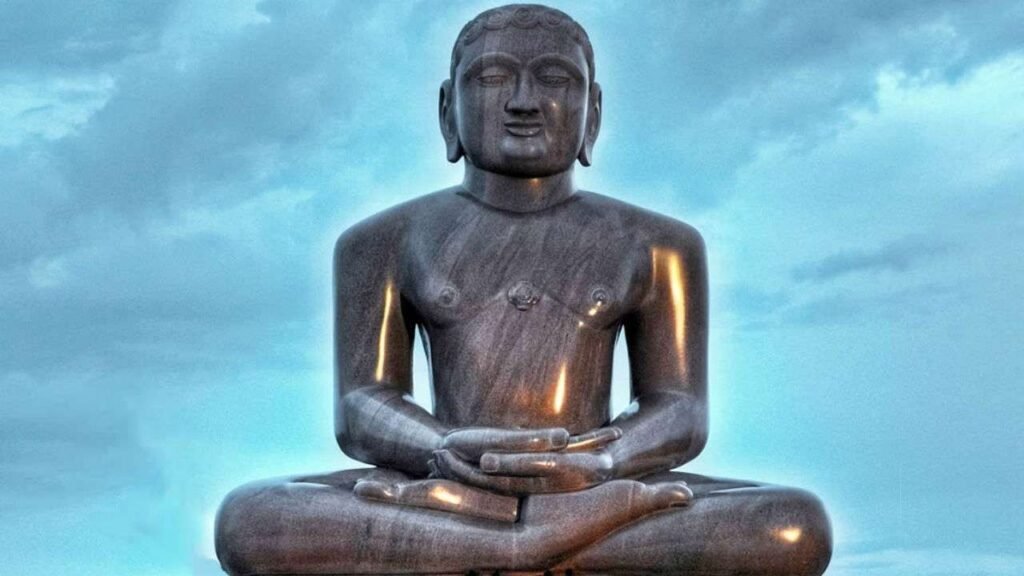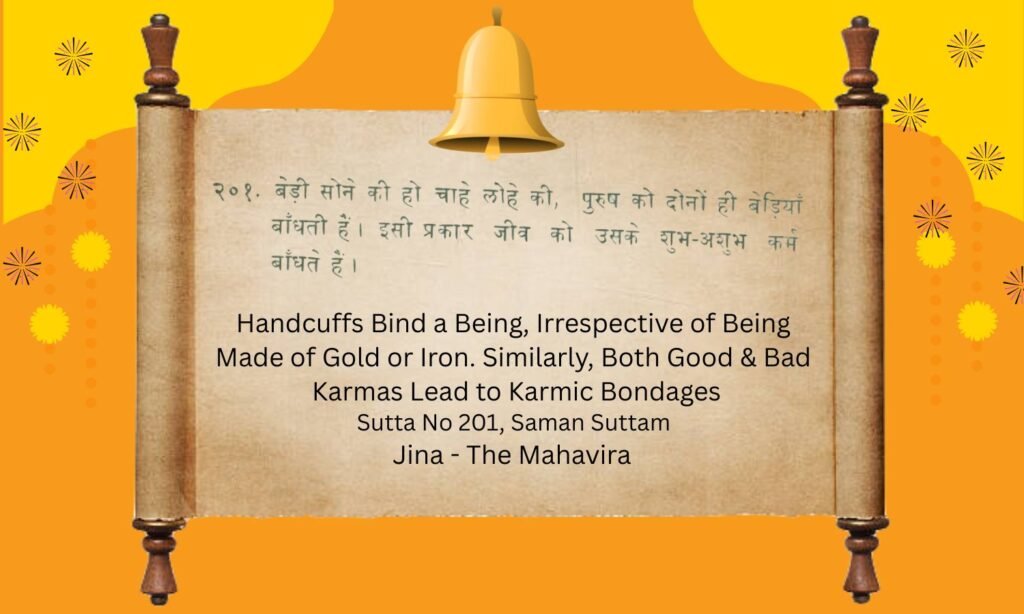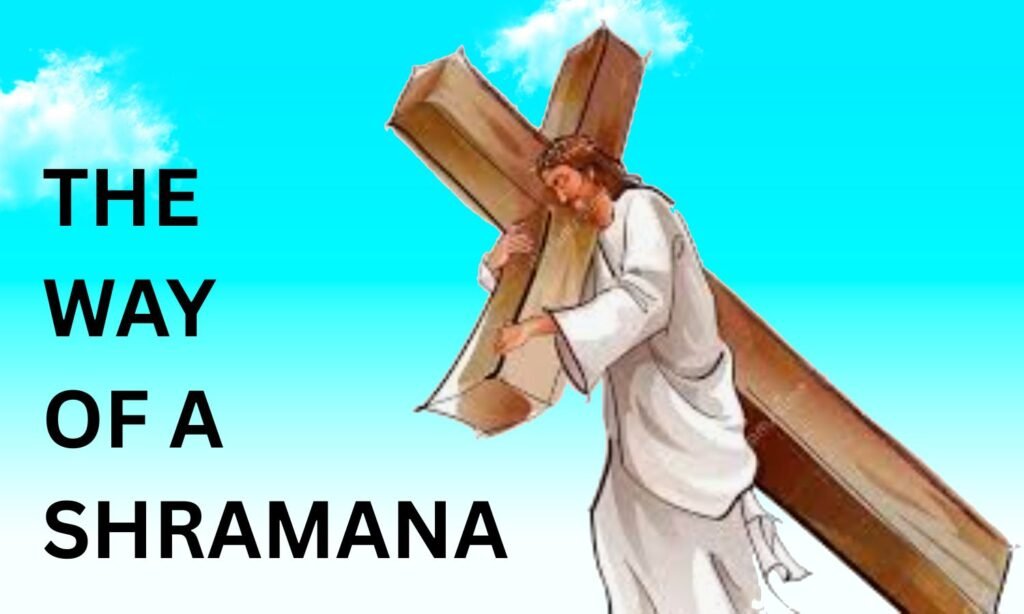On the auspicious occasion of Mahavir Jayanti, we remember and reflect upon the life and teachings of Lord Mahavira, the 24th Tirthankara of Shramanas. His birth, which is celebrated with great reverence, marks the occasion when a soul, ordinary like all of us, transcended the limitations of worldly existence and attained Nibana – the Ultimate Liberation. Yet, Mahavira’s greatness does not lie in being a prophet – a divine chosen one, or an incarnation or an Avtara of a Supreme deity. Instead, it lies in His profound humanity, His unwavering commitment to right livelihood, and His ability to inspire a path of spiritual awakening for all beings.

A Mortal, Not a Prophet or Divine Avatar
One of the central tenets of Jainism is that Mahavira was not a prophet sent by any Supreme God to convey divine messages to humanity. He was not a chosen son, nor was he a divine deputy tasked with establishing righteous order on Earth. In fact, Mahavira did not claim to be an avatar of any Lord Supreme who descended to Earth to restore or re-establish the Dharma (right conduct). He did not come with any divine mandate or heavenly power to fulfill a cosmic mission.
Unlike many religious figures who are often portrayed as divine beings or messengers of God, Mahavira was a mortal being, born into a royal family, who had to navigate the same struggles, temptations, and challenges that we all face. He experienced birth, life, and death like every human being, with the only difference being that His death was the ultimate Death, which did not propel any further rebirths. His entire life was a living embodiment of how this Ultimate Death called Nibana be achieved through a simple, two-step process of refraining from adding any new Karmic Bondages (Sanyam) and willing acceptance of the after-effects of the Karmas we already roped in past (Nirjara).

The Path to Enlightenment: Addressing Karmic Dues
Imagine you are closing down a running business. What would be your approach? The first thing you would likely do is settle all open accounts—pay off any debts and collect the credits due. Essentially, you have to “zero out” all transactions before closing the business, right?
Similarly, Mahavira viewed the cycle of birth and death called Samsara, as akin to a running business. We are not born because of a command from a divine entity, but rather because we have open karmic balances—both debts and credits—that need to be settled. To break free from this repetitive cycle of birth and death, we must resolve these karmic accounts. By settling our karmic obligations through righteous actions, we can eventually close the loop and attain liberation.
Key to Moksha: Practicing Samvar & Nirjara
To begin addressing our karmic bondages, Mahavira emphasized that the first step is to stop creating any new debts or credits. This means halting all actions, both good and bad, that could further complicate or expand our karmic exposures.

He referred to this process as Samvar, a concept that goes beyond simple self-restraint. While it can be loosely translated as such, Samvar encompasses a much deeper practice of consciously avoiding any actions both good and bad, that might add to our karmic load.
The second step Mahavira advocated was Nirjara which is to reverse or resolve the existing karmic transactions and bring them to closure. This involves facing both positive and negative karmas as they unfold in our lives. When negative karmas ripen, we must accept their consequences without bitterness or resentment. Likewise, when positive karmas bear fruit, we should embrace them with humility, recognizing that all outcomes are part of the process of settling our karmic accounts. Only by following this two-step process of Samvar & Nirjara can we ultimately achieve balance and break free from the cycle of Samsara.

One of the most profound examples of Mahavira’s teachings in practice is His acceptance of being crowned as the 24th Tirthankara of the ancient Shramana tradition. A common misconception among Jains is that Mahavira was declared the 24th Tirthankara immediately upon His enlightenment. In reality, the fact is that during His times, there were many claimants for the title, including Buddha. Declaration of Mahavira being the destined 24th Tirthankara came only after careful examination of all these claimants by the followers of Parshava, the 23rd Tirthankara, which followed with the merger of their existing Church with the one that had built around Mahavira.
What’s remarkable here is that Mahavira did not hesitate to accept this high honor. He understood that this was the natural result of His previous virtuous actions and dedication to propagating the Shramana philosophy in His previous life. For Mahavira, the recognition was not any victory over Buddha and similar other enlightened peers of the time, but the ripening of His past karmas. With utmost humility, Mahavira allowed it to unfold, showing no pride or resistance. The festivities of Das-Lakshana among Digambara Jains is a testimony of this event, where they still celebrate the ten characteristics (lakshan) that made them discover Jina the Mahavira as the destined Tirthankara much before the Church of the 23rd Tirthankara made it official.
This willingness to embrace whatever comes our way, without bitterness or arrogance, is a key aspect of Mahavira’s second step – Nirjara. Unfortunately, there isn’t a direct translation for Nirjara in English, but it essentially refers to the process of shedding old karmas and allowing ourselves to experience life’s outcomes with willing cheerfulness. It’s about accepting both the highs and the lows with grace, and this practice was central to Mahavira’s path.
By following the two-step strategy of Samvar and Nirjara, as the layers of our karmic bondages begin to fade, the brilliance of the soul beneath them gradually shines through. Once the shroud of karma is completely eradicated, Moksha – the Ultimate Enlightenment – is awakened, which in turn is the stepping stone into Nibana – The Ultimate Liberation from the Cycle of Samsara.
Essence of Jainism: Be Your Own Christ
Mahavira practiced and exemplified the path of Samvar & Nirjara, establishing a way for humanity to follow and find their own liberation. His life stands as proof that no redeemer is needed to seek redemption. He demonstrated that a Messiah is not required to lead us out of suffering. Instead, He advocated humanity to mature and take responsibility for their Karmas.

Mahavira advocated that every man and woman needs to carry the ‘cross of their karmas’ on their shoulders. No one else should suffer for you. The Ford He set was designed to make us our own Christ.
Conclusion
Mahavira was not a deity, nor a divine messenger sent to deliver a sacred message. He was a human being who, through his own efforts, overcame the ignorance that binds us all and paved the way for spiritual liberation. His teachings offer us the tools to dismantle the barriers of our own consciousness and achieve a state of pure awareness and bliss. Today, as we celebrate His Birthday, let us remember that the path to enlightenment is not reserved for the chosen few, but is open to every one of us, as long as we have the courage to walk the path of Samvar & Nirjara.
May we all be inspired by Lord Mahavira’s teachings and strive to tread the path He left for us—the Ford that leads us beyond the ocean of Samsara into liberation and ultimate peace called Nibana.
